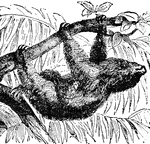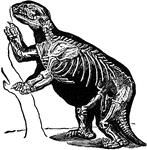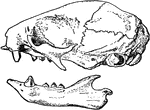Clipart tagged: ‘Sloth’
Armadillo
The armadillos have scaly skin for protection; some have also the power of rolling themselves into a…

Armadillo
The limbs are short and strong, as are also the claws , and the animals have a great aptitude for digging…

Megatherium
This is a skeleton of the Megatherium. Megatheria were a group of elephant-sized ground sloths that…

Sloth
The sloth differs from all other arboreal four-legged mammals in its manner of climbing. It always has…

Sloth
A genus of mammals belonging to the bear family. They are native to Central and South America. These…

Giant Sloth
"Sloth is the popular name for any individual of the Edentate group Tardigrada, from their slow and…

